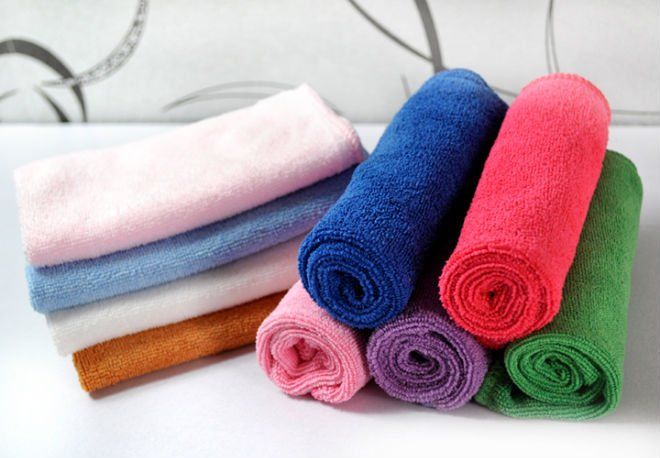Go Green Without Compromising Convenience with Eco-Friendly Kitchen Products:
In our fast-paced world, it’s easy to choose convenience over sustainability—especially in the kitchen. But here’s the good news: Going green doesn’t have to mean sacrificing comfort or style. Over the past year, I’ve made small, consistent changes to my kitchen to cut down on plastic use, reduce waste, and support eco-friendly brands. Surprisingly, these changes haven’t just helped the planet—they’ve made my kitchen more organized, efficient, and even a little more beautiful.
So, if you’re like me — passionate about sustainable living but not sure where to start — then this guide is for you. Let’s explore five eco-friendly kitchen products you can use every day that are practical, affordable, and good for the environment.
Contents
My Thoughts: Small Steps, Big Results
Using eco-friendly kitchen products isn’t about being perfect; it’s about being more mindful. I didn’t transform my kitchen overnight. I started with waxed paper, then straw, and gradually moved towards a more sustainable system. Each product replaces something wasteful. Each change feels empowering.
So if you’re thinking about making your kitchen greener, start small. Try one product this week, maybe two next month. Before you know it, you’ll be wondering why you ever did it any other way.
1. Reusable Beeswax Food Wraps
Why I Love Them:
A year ago, I used cling film like there was no tomorrow. Every half-cut lemon or leftover chapati would be wrapped in plastic. Then a friend introduced me to eco-friendly food storage wax wrap—and honestly, I’ve never looked back.
How it helps the environment:
Plastic wrap is disposable and often not recyclable. But that is not the case with wax wrap; we can reuse it.
My Tips: Buy a pack of different sizes. It’s incredibly satisfying to wrap up half a papaya without guilt.
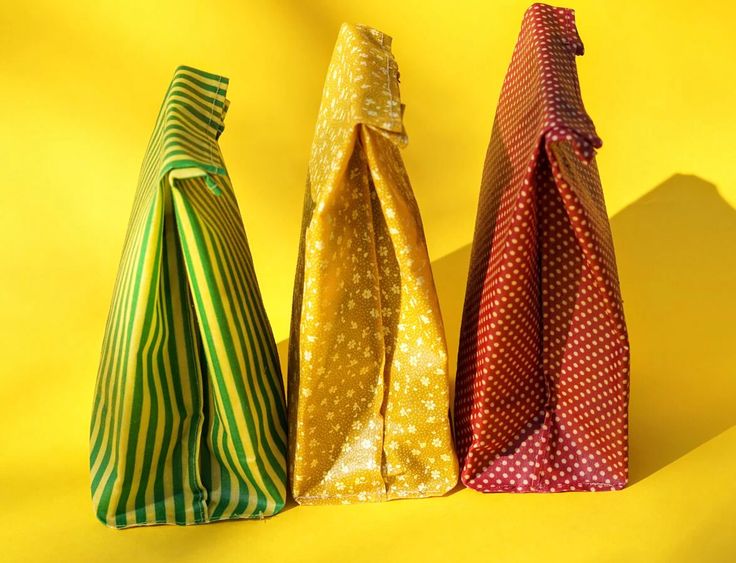
2. Stainless Steel or Bamboo Straws
My personal opinion:
If you love iced coffee, smoothies, or coconut water like I do, reusable straws are for you. I used to keep a pack of plastic straws in my drawer—until I realized that a single plastic straw can take over 200 years to decompose. That’s longer than your great-grandchildren will live!. And also, you can use it as Sustainable Drinkware.
Now, I carry a small pouch with a few stainless steel straws and a small brush. It’s sleek, stylish, and surprisingly healthy.
Environmental impact:
Plastic straws are one of the top 10 causes of marine pollution. Eliminating them may seem small, but collectively, it makes a huge difference.
Pro Tips: Bamboo straws are more biodegradable than steel ones, but they are a little harder to clean. Choose the one that best suits your routine.
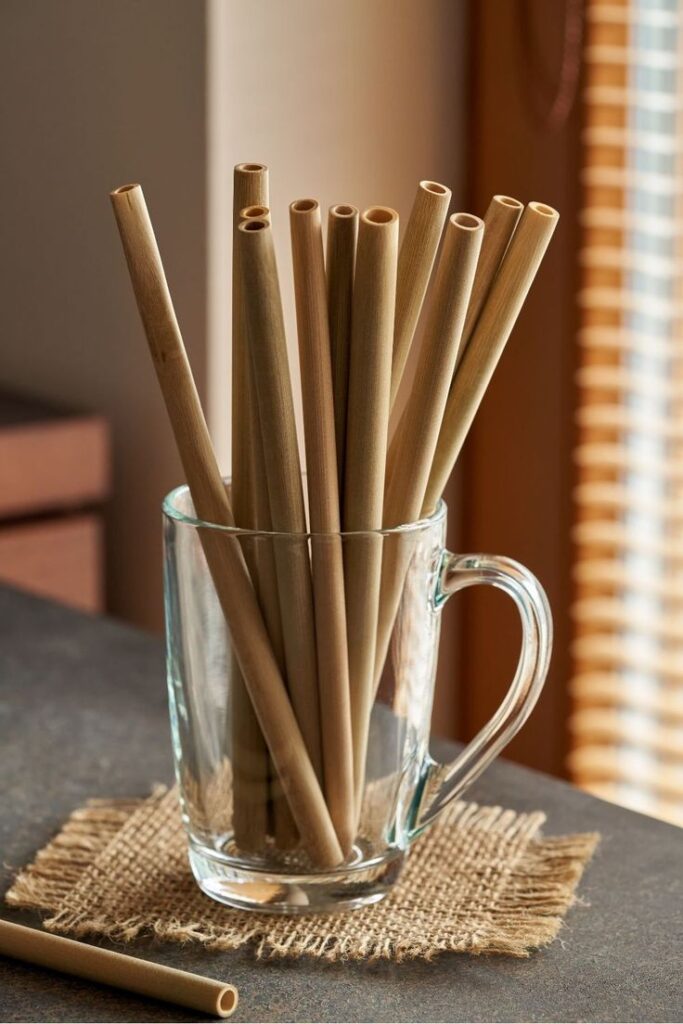
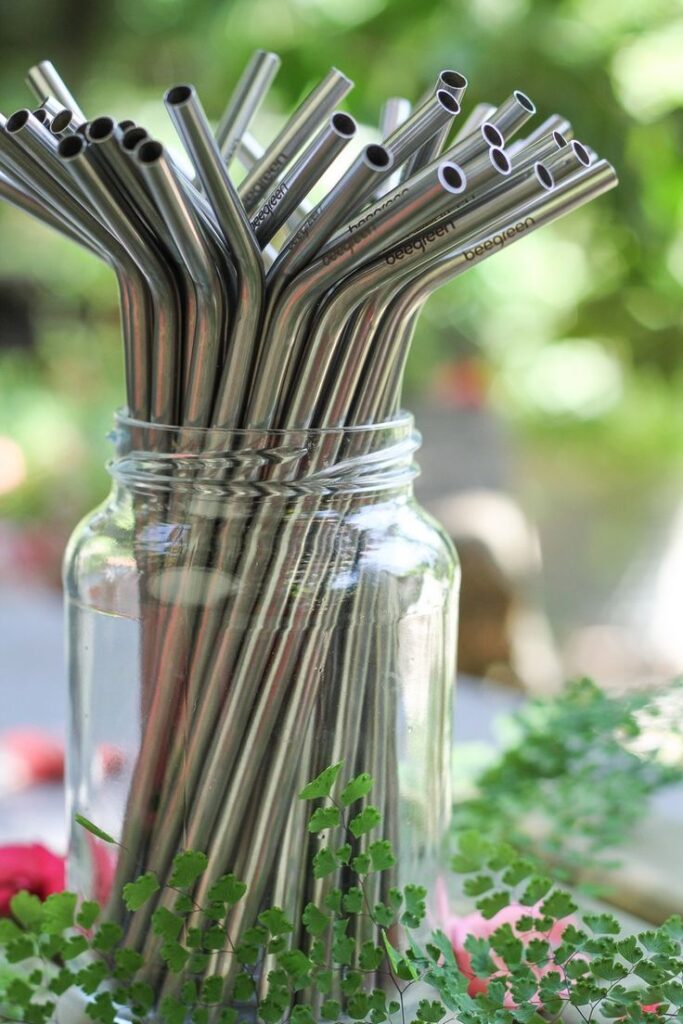
3. Compost Bin for Kitchen Waste
Real Talk:
I was skeptical about composting. I assumed it was smelly, dirty, and something only die-hard environmentalists did. Then I tried it—and wow, it changed my perspective on kitchen waste.
With a simple compost bin under my sink, I now separate peels, eggshells, coffee grounds, and vegetable scraps. In just a few weeks, I noticed my trash bags were lighter and my garden was healthier. Also, we can call it organic waste disposal. or kitchen compost bin.
Why It Matters:
Food waste in landfills releases methane, a powerful greenhouse gas. In turn, fertilizer application turns it into nutrient-rich soil.
What You Look For:
Choose a bin with a charcoal filter for odor control. Many compact designs blend nicely into modern kitchens.
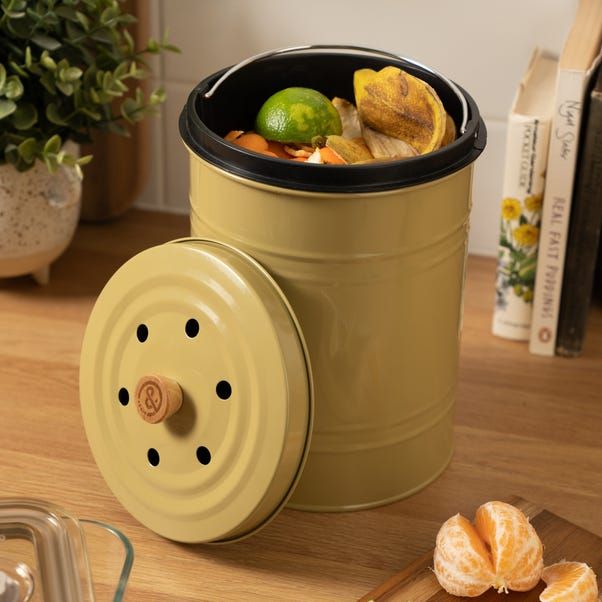
4. Refillable Glass Spray Bottles (With DIY Cleaners)
My Green Kitchen Hack:
I used to buy branded kitchen sprays every month – only to throw away the plastic bottles when they were empty. Now, I use a glass spray bottle filled with a homemade cleaner or natural kitchen cleaner made with white vinegar, lemon peel, and a few drops of essential oil.
It’s a lot cheaper than the store-bought version and smells amazing.
Eco Benefits:
You’re reducing chemical waste and plastic waste at the same time. Many DIY recipes are also safe for kids and pets.
Daily Use:
Wipe down counters, clean cutting boards, or spray down sinks. It’s just as effective as commercial sprays and twice as satisfying to use.
Also read – How to Make High-Protein Vegan Taco Salad in Just 15 minutes?

5. Cloth Napkins and Kitchen Towels Instead of Paper
A Small Change with a Big Impact:
It was the easiest switch I ever made—yet it made the biggest difference. Paper towels always ended up in the trash, especially during big meals or cleanup. I now use soft cotton napkins and absorbent kitchen towels to mop up spills, dry my hands, and wipe down my counters.
Throw them in the washing machine, and they should look good as new.
Environmental Reasoning:
Paper towels contribute to deforestation and landfills. By making them reusable, a family can save up to 300 rolls per year.
Bonus Tips: Choose colors or designs that complement your kitchen. These can make your space feel more comfortable and purposeful.
To stay well and healthy, I recommend you use eco-friendly kitchen products.
